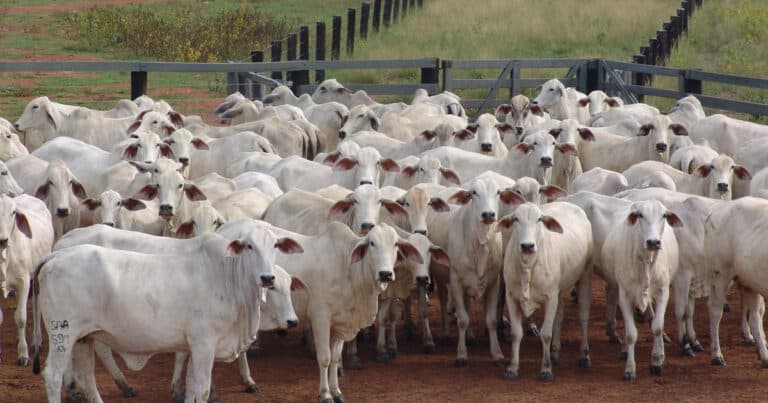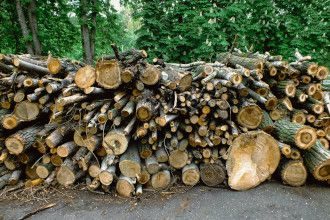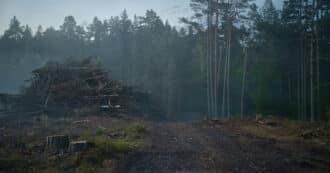By Matthew Mausner – One of the biggest problems in the global environmental situation today is deforestation. The problems caused by deforestation include global warming, desertification, habitat destruction, topsoil loss, erosion, and the general human devastation of the forest environment.
Civilization Before Deforestation
Humans have modified the environment in various ways everywhere they have lived. In general, hunter-gatherer societies embraced forest growth, especially when trees bore desirable fruit or nuts, or their bark or sap could be used.
In a few rare cases like Easter Island, it appears that a hunter-gatherer society caused catastrophic deforestation of its environment. But in general, like the island of Tikopia, proactive forest management for long-term sustainability of society and its local ecosystem was the general practice for hunter-gatherer groups.
William Cronon’s seminal study ‘Changes in the Land‘ demonstrated the advanced forest management techniques of many Native American groups. While the Native American nations he described, in what’s today New England, used the solution of controlled fire burning and underbrush clearing to encourage game, they also emphatically supported a vibrant sustainable forestry. Wood was certainly used for fires, but only on a very small scale, and rarely cut down- the usual amount of fallen and dried out trees would generally suffice.
Deforestation Increases with The Agricultural Revolution
Since the beginning of the ‘agricultural revolution‘, forested areas have often been cleared in favor of fields for planting our chosen crops. Previous semi-forested areas across Mesopotamia and the Nile River valley, the northern Chinese plain, the Indus River valley, and then wherever agriculture spread globally, were cleared for monoculture farms of expanding civilizations.
Trees were cut down to be resources for housing, and for fuel. Cooking with wood for fires was only one of many uses of fire. Once metal became a significant factor in human civilization, massive amounts of firewood was needed to fire the kilns to make copper, iron, bronze, and other industrial products. In the Mediterranean region this need was already generating significant deforestation by 1200BCE.
Causes of Deforestation Today
The main question is, what causes deforestation today? Since European colonization of much of the world and especially since the industrial revolution, deforestation has scaled up even more dramatically. There have been many causes of deforestation stemming from these vast changes.
Clear-cutting for lumber for the voracious needs of expanding civilization was wildly irresponsible, often chopping down priceless old growth forests and leaving behind barren empty fields where nothing could easily regrow. Mining is an industry that leaves giant scars on the landscape, sometimes cutting down not just forests but entire mountains in the search for what lies beneath.
In certain regions like the Amazon, irresponsible expansion of cattle ranching into previously rainforest ecosystems led to cutting down wide stretches of the most biodiverse habitat on earth, in favor of temporary ranchland for growing animals, that not only destroyed the forest but usually within a few short years left nothing but a depleted clay that is essentially infertile. As a result, the forest cannot grow back, but it’s no longer useful for ranching either, as even grass does not grow.
Deforestation can been devastating, and what’s worse is that we have long known that it’s destructive. The famous ‘Carthaginian Peace‘ refers to the Roman deliberate devastation of the empire of Carthage when they won the third Punic War. They cut down all the forests and salted the fields, so that nothing could grow back and it became a barren wasteland for many generations, so that Carthage could not return to power and threaten Rome again. Today we have in effect done the same, without a military purpose in places all over the planet.
Paper, Beef, and Deforestation
Both rich countries and poor countries are participating in current deforestation in different ways. Urban and suburban sprawl are eating into forest cover almost everywhere. Use for paper is unsustainable except for timber byproducts, but continues to drive logging. Rich countries such as Japan, the US, and China have voracious appetites for fine hardwoods from places like Indonesia and South America, driving irresponsible clear-cutting and even illegal logging because the profit incentives are so high.
Western demand for beef, fuels the demand for expanding cheap ranching, and slash-and-burn agriculture in the Amazon by poor Brazilian farmers seeking to meet demand for inexpensive beef. This drives the cutting of large swaths of the Amazon, destroying both the forest and its rich biodiversity. This is in spite of the unsuitability of that land for cattle as they rapidly exhaust the surprisingly thin soils (tropical forests keep most of their nutrients circulating up to the canopy, rarely in the soil) so that what remains from a brief ranching experiment is an infertile hard-clay wasteland.
Survival Causes Deforestation
In places where the worst third world poverty drives people to the edge of survival, such as much of the overcrowded regions surrounding the Himalayas and vast areas of sub-Saharan Africa, people cut down trees for essential fuel for cooking fires. They do this even to boil water to make it safer to drink, despite the irreversible cost of cutting down every single tree where none can grow back. This is compounded by regions where people equally poor might burn all the wood to make charcoal to sell.
Palm Oil Causes Deforestation
Another cause of deforestation is the production of palm oil, and the related cultivation of ‘hearts of palm’ and related products. In places of biodiverse tropical forests, areas are cleared and put under cultivation for the production of palm oil.
This is often happening in tandem with other deforestation patterns common in tropical forest regions like the Amazon Rainforest and Indonesia, including illegal logging especially of hardwoods, slash and burn farming, short-term cattle ranching, and the increasing sprawl of megacities.
These causes of deforestation and forest loss are all rooted in global economic trends which drive more and more people in the developing world away from traditional subsistence towards a voraciously unsustainable urbanized and alienated slum poverty.
Global Economics Demands Deforestation
The world’s rising population has generated increasing demand for all sorts of products, including lumber, meat, and palm oil, which all cause deforestation. Similarly, there are other agricultural plants and food products that can be produced in a former area of forest, and too often there are local decisions to convert large scale forest land into logging, ranching, or agriculture.
Even sadder is when these decisions are made without regard to the actual viability of such a choice, as soil erosion is a frequent consequence of deforestation. As a result, new trees cannot be planted, and the soil can be exhausted rapidly by grazing cattle, or mining, or other improper land use. In some temperate lands, soil erosion can be reversed gradually and carefully by replanting, but in some tropical deforested areas of the world, all that is left behind from deforestation is a hard infertile clay.
The Interaction Between Deforestation and Climate Change
Other causes of deforestation are possibly caused by aspects of climate change. In both the Amazon rainforest, the forests of the American west, and in the vast taiga forests of Siberia, notable changes in climate and extended droughts or unprecedented heat-waves have led to more and more forest fires and forest loss. When there is record breaking heat around the world, as in our current summer of 2021 with temperatures reaching into the 110s (45+ Celsius) around the world from Oregon to Siberia to British Colombia to Iran, forest fires can be far larger and more out of control than ever before.
Such global large scale shifts in climate affect every region from tropical land all the way to the arctic. While there has been suggestion that increased carbon in the atmosphere may actually lead to reforestation in places like the Sahel, as trees literally eat carbon, most scientists see far more ways that climate change is leading to deforestation.
In addition, deforestation causes climate change. Trees themselves have cooling effects, with a canopy routinely screening lower levels of a forest from the sun’s direct heat. They draw water up from the soil, and in their shade, moisture and a cooler temperature can prevail.
Due to the large scale of the tropical rainforests and the vast taiga forests of Siberia and Canada, this helps moderate climate, as does the oxygen that such huge green forests give off, and of course the carbon they consume and convert into life. Illegal logging of tropical forests for timber, for expansion of human mining, for livestock use, for agriculture or for other short-term food needs, reduces all these positive impacts forests have on climate.
Expansion of deforestation causes the bare land to heat up and dry out. These heat sinks add to the reflected heat in the atmosphere, and without the ability of every single tree to consume and convert carbon, global warming accelerates.
Is Deforestation Leading to Catastrophe?
With all these myriad causes of deforestation, is there any hope for our planet before it descends into a runaway, self-reinforcing loop of environmental catastrophe? Can we stop deforestation?
Certainly because of the basic level of human natural need for agriculture, livestock, timber and paper, global demand and consumption will always give us a reason to cut down trees. The forests support an enormous numbers of plant and animal species, some of which are important resources as medicinal treatments for human health. We have to find solutions that are responsible in order to preserve the forests.
See our next post for deforestation solutions!
* Featured image source







